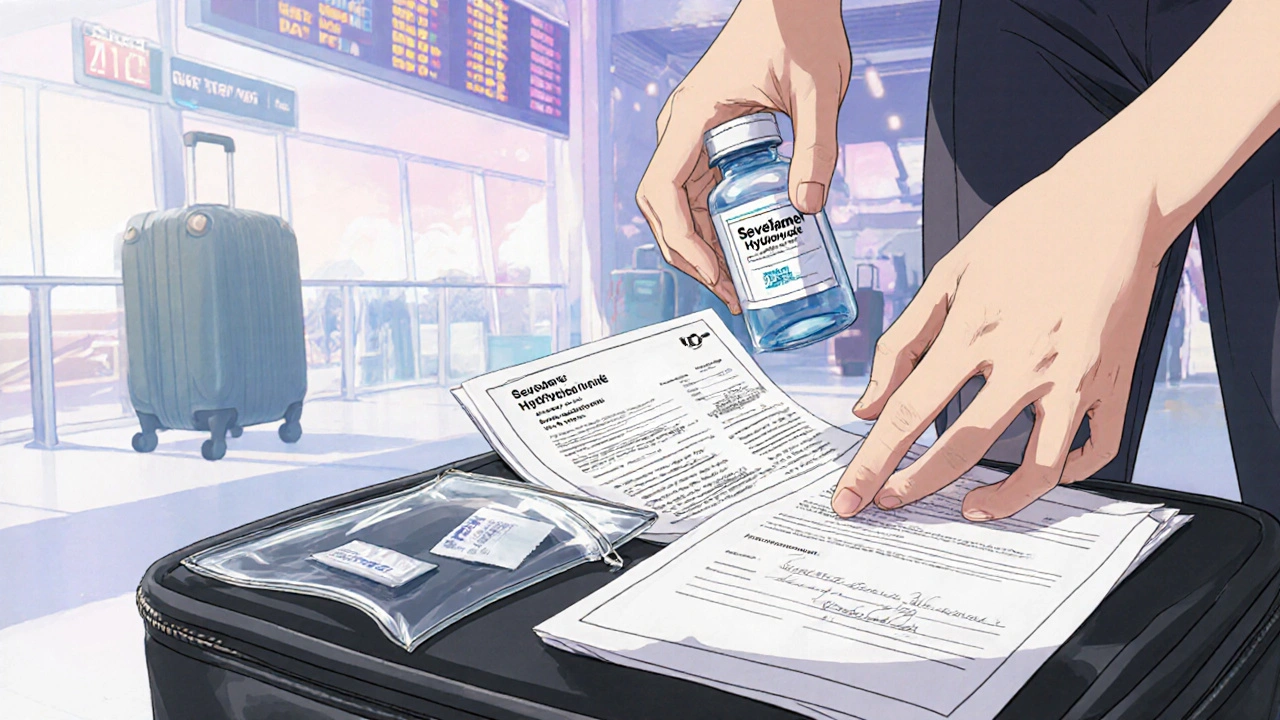When working with Sevelamer Hydrochloride, a non‑calcium phosphate binder prescribed for chronic kidney disease patients. Also known as Renagel, it binds dietary phosphate in the intestines to lower blood phosphorus levels. This simple action tackles the core problem of hyperphosphatemia, a common complication when the kidneys can’t filter phosphate properly. In short, Sevelamer Hydrochloride is the tool that helps keep phosphorus in check without adding extra calcium to the mix.
Think of phosphate binders as a net that catches phosphate from the food you eat. Sevelamer’s net is made of a polymer that grabs phosphate molecules, forming a complex that the body can’t absorb. The complex then travels through the gut and leaves the body in stool. This mechanism is especially valuable for people on dialysis, where the kidneys’ ability to remove phosphate is severely reduced. When kidney disease advances, the risk of cardiovascular calcification rises, and controlling phosphorus becomes a matter of heart health as much as bone health.
Doctors often choose Sevelamer over calcium‑based binders because it avoids extra calcium that can contribute to vessel calcification. Compared with other options like calcium acetate, lanthanum carbonate, or newer iron‑based binders, Sevelamer offers a neutral calcium profile and a modest impact on lipid levels. Its side‑effect profile includes mild gastrointestinal upset—nausea, constipation, or bloating—but these are generally manageable with diet tweaks or dose timing.
Choosing the right binder involves weighing several factors: serum phosphorus goals, calcium balance, pill burden, and cost. Sevelamer typically comes in 800 mg tablets, and a typical dose ranges from 2.4 g to 8 g per day, divided with meals. Importantly, patients must take the tablets with meals; taking them on an empty stomach reduces effectiveness. Monitoring includes checking phosphorus, calcium, and lipid panels every few weeks after starting or adjusting the dose.
If you’re scanning our article list, you’ll find a detailed side‑by‑side comparison of Renagel with other binders, practical tips for handling common GI side effects, and advice on how to talk to your pharmacist about insurance coverage. All of that knowledge builds on the fundamentals we just covered, so you’ll be ready to make an informed decision about managing phosphorus and protecting your kidneys.

Learn how to travel safely with Sevelamer Hydrochloride, covering packing, temperature control, dosing across time zones, customs tips, and emergency planning.
Read More© 2025. All rights reserved.